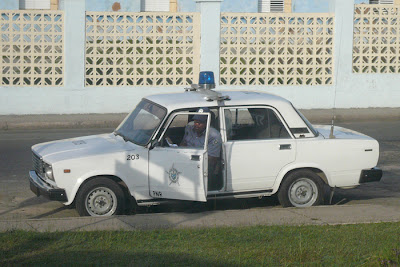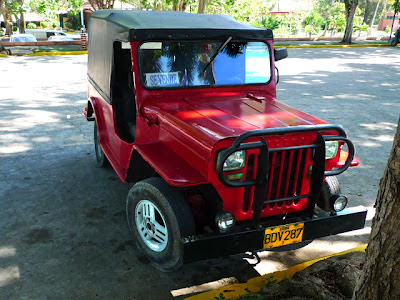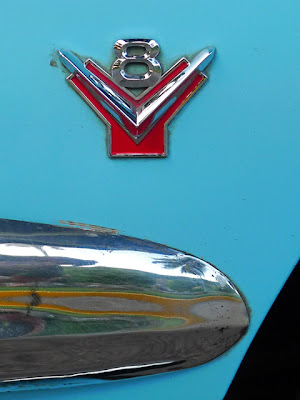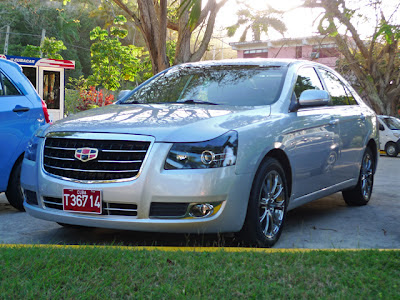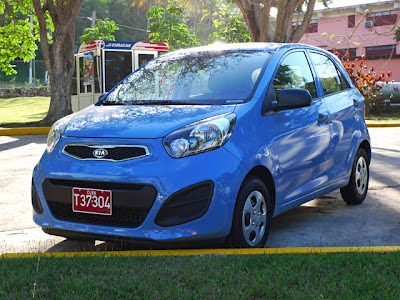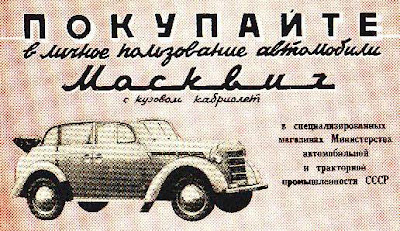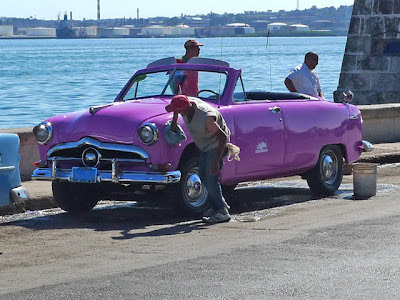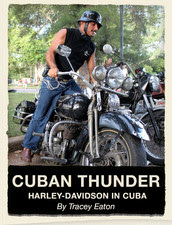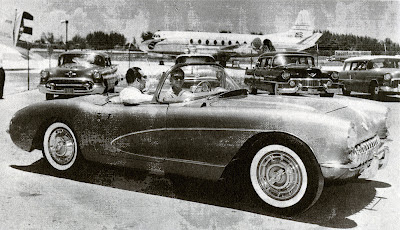![]() |
| From the collection of the Biblioteca Nacional José Marti. |
I've only ever seen this one photograph of the Batista 1956 Chevrolet Corvette. According to the Biblioteca Nacional José Marti, it was taken in August 1957 at the Havana Airport.
In the passenger seat is the Cuban president (and by then, dictator) Fulgencio Batista. If he is concerned about the roiling opposition that has already resulted in an attempt on his life, he doesn't show it here.
The driver and owner of the Corvette is identified as Batista's son Fulgencio-Rubén, who would have been 23 at the time.
We see from this black-and-white image that the car is neither Polo White or Onyx Black, but we can't tell whether it is Aztec Copper, Cascade Green or Venetian Red – the other Corvette colours for 1956. We don't know if it had the three-speed manual gearbox that had recently become available. Or whether, beyond its optional whitewall tires, it had the AM radio, electric windows or even the dual four-barrel carburetor setup that were other available extra-cost features.
We do know it was one of 3,467 Corvettes assembled that year. And that the 1956 is regarded by many as not just the best looking of the first-series Corvettes, but among the top classic cars of all periods.
But what could have happened to this car?
Was it wrecked, like so many sports cars of its era? Perhaps, although the younger Batista, who went by the name Rubén, has been described as quiet and thoughtful, and does not seem the sort to have driven carelessly. He was married, and a member of Cuba's House of Representatives.
Did it make its way back to the United States, by rail ferry or on the S/S City of Havana, the car ferry between Cuba and Florida? Again, perhaps. Rubén had ties to the U.S. He lived in Florida for three years as a child, and later attended private schools in the United States before studying economics at Princeton University. After his father was deposed by Fidel's revolutionaries he would settle in Miami, investing in real estate and quietly pursuing his passion for historical research until his death in 2007.
Or did this Chevrolet Corvette stay in Cuba, left behind when the Batista family and its key supporters fled the island on Jan. 1, 1959? Did it end up in the hands of some government official, like the
Gullwing Mercedes spotted being driven by a policeman in 1978? Was it used and used until it was no more?
Or was it secreted away by a friend or relative, and does it remain in some Havana workshop or rural
establo, still wearing its spinner hubcaps and wide whitewalls, still waiting for a Batista to come and turn its ignition key?
Bonus question: Name the makes and models of the other cars at the airport that day.



